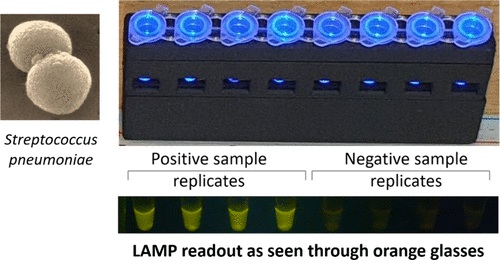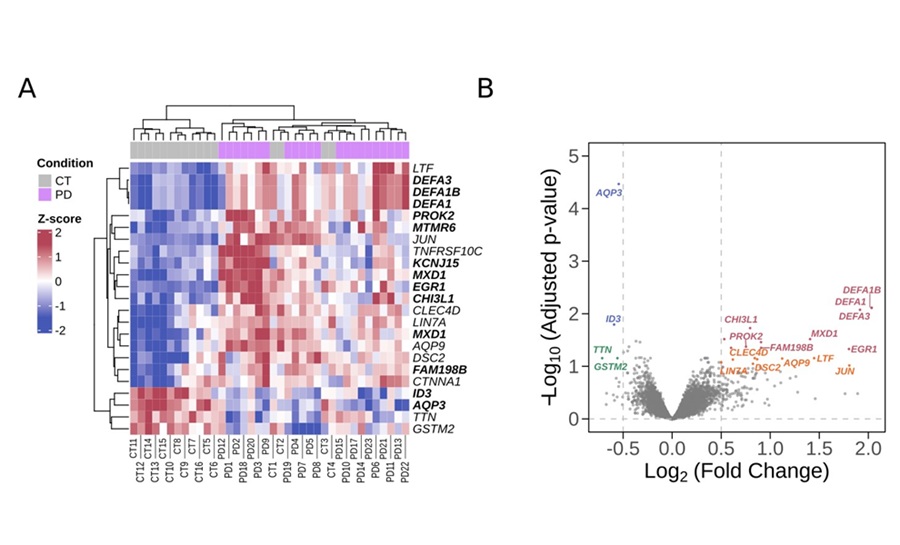Two Newly Developed Tests May Better Diabetes Diagnosis and Monitoring
|
By LabMedica International staff writers Posted on 28 Jul 2015 |
At AACC 2015 (July 26-30; Atlanta, GA, USA) research teams presented results of successful testing of two new potential methods for diagnosing and monitoring diabetes in its standard or gestational forms. The findings may lead to easier, timelier, and more affordable ways of identifying and treating this chronic disease.
One test study, by a research team led by Prof. Sridevi Devaraj, PhD, of Texas Children’s Hospital and Baylor College of Medicine (Houston, TX, USA), was to determine if a blood biomarker could be identified for gestational diabetes (GD), which occurs only during pregnancy and poses serious health risks for both mother and baby.
Today’s test for standard diabetes, which measures levels of the biomarker glycated hemoglobin (HbA1c), has limited usefulness for GD. The HbA1c test measures patient average glucose blood levels over a period of 3 months, and cannot be used to determine a patient’s blood glucose values on a daily, or even weekly, basis. This makes it challenging to closely track glucose levels during relatively few weeks of pregnancy, especially as GD is not diagnosed until the 3rd trimester.
Using stored blood samples collected from 124 pregnant women, Prof. Devaraj and her colleagues measured the levels of 3 types of proteins. They found that the levels of one—1,5Anhydroglucitol (1,5AG)—were significantly different in the women diagnosed with GD. The researchers were also able to establish a specific cutoff level at which the concentration of 1,5AG became a reliable predictor of which women had diabetes. One of the main potential advantages of 1,5AG as a biomarker for GD is its short “halflife” of 2 weeks, compared to HbA1c’s of 3 months.
“Our findings are very preliminary and need to be confirmed in larger groups of women,” said Prof. Devaraj, “but, if confirmed, they suggest a possible new and more immediate approach for diagnosing and monitoring diabetes during pregnancy.”
For the second test study, a research team led by Joris R. Delanghe, MD, PhD, Ghent University (Ghent, Belgium), investigated the novel view of whether fingernail clippings could be used instead of blood to diagnose and monitor diabetes. They collected nail clippings from 25 people with and 25 without diabetes. After the clippings were ground into powder, a relatively inexpensive spectrometer was used to measure the amount of nail protein that had undergone glycation (bonding with sugar molecules).
“We found a striking difference in the measurements between the control group and the patients with diabetes,” said Prof. Delanghe, “This finding suggests that nail clippings may serve as a reliable and noninvasive diagnostic tool,” with potential to make diagnosing diabetes much simpler and less expensive. Nail clippings, unlike blood samples, can be obtained noninvasively. They also take up little space and can be stored at room temperature for at least 1 month without affecting spectrometer outcomes.
“The proposed test may become particularly useful in low and middle income countries, where laboratories are often located long distances from where patients live,” said Prof. Delanghe.
Related Links:
American Association for Clinical Chemistry (AACC)
AACC 2015 Annual Meeting & Clinical Lab Expo
One test study, by a research team led by Prof. Sridevi Devaraj, PhD, of Texas Children’s Hospital and Baylor College of Medicine (Houston, TX, USA), was to determine if a blood biomarker could be identified for gestational diabetes (GD), which occurs only during pregnancy and poses serious health risks for both mother and baby.
Today’s test for standard diabetes, which measures levels of the biomarker glycated hemoglobin (HbA1c), has limited usefulness for GD. The HbA1c test measures patient average glucose blood levels over a period of 3 months, and cannot be used to determine a patient’s blood glucose values on a daily, or even weekly, basis. This makes it challenging to closely track glucose levels during relatively few weeks of pregnancy, especially as GD is not diagnosed until the 3rd trimester.
Using stored blood samples collected from 124 pregnant women, Prof. Devaraj and her colleagues measured the levels of 3 types of proteins. They found that the levels of one—1,5Anhydroglucitol (1,5AG)—were significantly different in the women diagnosed with GD. The researchers were also able to establish a specific cutoff level at which the concentration of 1,5AG became a reliable predictor of which women had diabetes. One of the main potential advantages of 1,5AG as a biomarker for GD is its short “halflife” of 2 weeks, compared to HbA1c’s of 3 months.
“Our findings are very preliminary and need to be confirmed in larger groups of women,” said Prof. Devaraj, “but, if confirmed, they suggest a possible new and more immediate approach for diagnosing and monitoring diabetes during pregnancy.”
For the second test study, a research team led by Joris R. Delanghe, MD, PhD, Ghent University (Ghent, Belgium), investigated the novel view of whether fingernail clippings could be used instead of blood to diagnose and monitor diabetes. They collected nail clippings from 25 people with and 25 without diabetes. After the clippings were ground into powder, a relatively inexpensive spectrometer was used to measure the amount of nail protein that had undergone glycation (bonding with sugar molecules).
“We found a striking difference in the measurements between the control group and the patients with diabetes,” said Prof. Delanghe, “This finding suggests that nail clippings may serve as a reliable and noninvasive diagnostic tool,” with potential to make diagnosing diabetes much simpler and less expensive. Nail clippings, unlike blood samples, can be obtained noninvasively. They also take up little space and can be stored at room temperature for at least 1 month without affecting spectrometer outcomes.
“The proposed test may become particularly useful in low and middle income countries, where laboratories are often located long distances from where patients live,” said Prof. Delanghe.
Related Links:
American Association for Clinical Chemistry (AACC)
AACC 2015 Annual Meeting & Clinical Lab Expo
Latest AACC 2015 News
- Automated Molecular Diagnostics System Presented at AACC 2015
- Portable Molecular Diagnostics System Unveiled At 2015 AACC
- Expanded Steroid Control Launched at the 2015 AACC Annual Meeting
- Innovative New Technology to Provide Plastic-Exterior Components with Glass Interior, Presented at AACC 2015
- Eco-Friendly Immunoassay Reagents Featured at AACC 2015
- Low Cost Point-of-Care DNA Amplification Test for Chlamydia Infection Demonstrated at the 2015 AACC Annual Meeting
- Inexpensive Multipurpose Point-of-Care Analyzer Unveiled at 2015 AACC Annual Meeting
- State-of-the-Art Automated Laboratory Systems Highlighted at the 2015 AACC Annual Meeting
- Siemens Showcases Multiple New IVD Solutions at AACC 2015
- New HPLC Quadruples Clinical Throughput Capabilities, Displayed at AACC 2015
- Diagnostic Test that Measures Active Renin in Hypertension Displayed at the 2015 AACC Annual Meeting
- Hair Testing May Offer Insights into Asthma-Related Complications in Pregnancy
- CE Marking of Theranostic Monitoring Test Announced at 2015 AACC Annual Meeting
- Ebola Rapid Lateral Flow Test Previewed at the 2015 AACC Annual Meeting
- AACC: Better Quality and Patient-Friendliness Needed in Direct Testing
- Clinical Chemistry Instruments and Reagents Under Scrutiny at the 2015 AACC Annual Meeting
Channels
Clinical Chemistry
view channel
VOCs Show Promise for Early Multi-Cancer Detection
Early cancer detection is critical to improving survival rates, but most current screening methods focus on individual cancer types and often involve invasive procedures. This makes it difficult to identify... Read more
Portable Raman Spectroscopy Offers Cost-Effective Kidney Disease Diagnosis at POC
Kidney disease is typically diagnosed through blood or urine tests, often when patients present with symptoms such as blood in urine, shortness of breath, or weight loss. While these tests are common,... Read moreMolecular Diagnostics
view channel
New Diagnostic Method Detects Pneumonia at POC in Low-Resource Settings
Pneumonia continues to be one of the leading causes of death in low- and middle-income countries, where limited access to advanced laboratory infrastructure hampers early and accurate diagnosis.... Read more
Blood Immune Cell Analysis Detects Parkinson’s Before Symptoms Appear
Early diagnosis of Parkinson’s disease remains one of the greatest challenges in neurology. The condition, which affects nearly 12 million people globally, is typically identified only after significant... Read moreHematology
view channel
ADLM’s New Coagulation Testing Guidance to Improve Care for Patients on Blood Thinners
Direct oral anticoagulants (DOACs) are one of the most common types of blood thinners. Patients take them to prevent a host of complications that could arise from blood clotting, including stroke, deep... Read more
Viscoelastic Testing Could Improve Treatment of Maternal Hemorrhage
Postpartum hemorrhage, severe bleeding after childbirth, remains one of the leading causes of maternal mortality worldwide, yet many of these deaths are preventable. Standard care can be hindered by delays... Read more
Pioneering Model Measures Radiation Exposure in Blood for Precise Cancer Treatments
Scientists have long focused on protecting organs near tumors during radiotherapy, but blood — a vital, circulating tissue — has largely been excluded from dose calculations. Each blood cell passing through... Read moreImmunology
view channel
Blood-Based Liquid Biopsy Model Analyzes Immunotherapy Effectiveness
Immunotherapy has revolutionized cancer care by harnessing the immune system to fight tumors, yet predicting who will benefit remains a major challenge. Many patients undergo costly and taxing treatment... Read more
Signature Genes Predict T-Cell Expansion in Cancer Immunotherapy
Modern cancer immunotherapies rely on the ability of CD8⁺ T cells to rapidly multiply within tumors, generating the immune force needed to eliminate cancer cells. However, the biological triggers behind... Read moreMicrobiology
view channel
High-Throughput Enteric Panels Detect Multiple GI Bacterial Infections from Single Stool Swab Sample
Gastrointestinal (GI) infections are among the most common causes of illness worldwide, leading to over 1.7 million deaths annually and placing a heavy burden on healthcare systems. Conventional diagnostic... Read more
Fast Noninvasive Bedside Test Uses Sugar Fingerprint to Detect Fungal Infections
Candida bloodstream infections are a growing global health threat, causing an estimated 6 million cases and 3.8 million deaths annually. Hospitals are particularly vulnerable, as weakened patients after... Read morePathology
view channel
New Molecular Analysis Tool to Improve Disease Diagnosis
Accurately distinguishing between similar biomolecules such as proteins is vital for biomedical research and diagnostics, yet existing analytical tools often fail to detect subtle structural or compositional... Read more
Tears Offer Noninvasive Alternative for Diagnosing Neurodegenerative Diseases
Diagnosing and monitoring eye and neurodegenerative diseases often requires invasive procedures to access ocular fluids. Ocular fluids like aqueous humor and vitreous humor contain valuable molecular information... Read moreTechnology
view channel
Cell-Sorting Device Uses Electromagnetic Levitation to Precisely Direct Cell Movement
Sorting different cell types—such as cancerous versus healthy or live versus dead cells—is a critical task in biology and medicine. However, conventional methods often require labeling, chemical exposure,... Read more
Embedded GPU Platform Enables Rapid Blood Profiling for POC Diagnostics
Blood tests remain a cornerstone of medical diagnostics, but traditional imaging and analysis methods can be slow, costly, and reliant on dyes or contrast agents. Now, scientists have developed a real-time,... Read moreIndustry
view channel
Qiagen Acquires Single-Cell Omics Firm Parse Biosciences
QIAGEN (Venlo, Netherlands) has entered into a definitive agreement to fully acquire Parse Biosciences (Seattle, WA, USA), a provider of scalable, instrument-free solutions for single-cell research.... Read more
Puritan Medical Products Showcasing Innovation at AMP2025 in Boston
Puritan Medical Products (Guilford, ME, USA), the world’s most trusted manufacturer of swabs and specimen collection devices, is set to exhibit at AMP2025 in Boston, Massachusetts, from November 11–15.... Read more
Advanced Instruments Merged Under Nova Biomedical Name
Advanced Instruments (Norwood, MA, USA) and Nova Biomedical (Waltham, MA, USA) are now officially doing business under a single, unified brand. This transformation is expected to deliver greater value... Read more

























